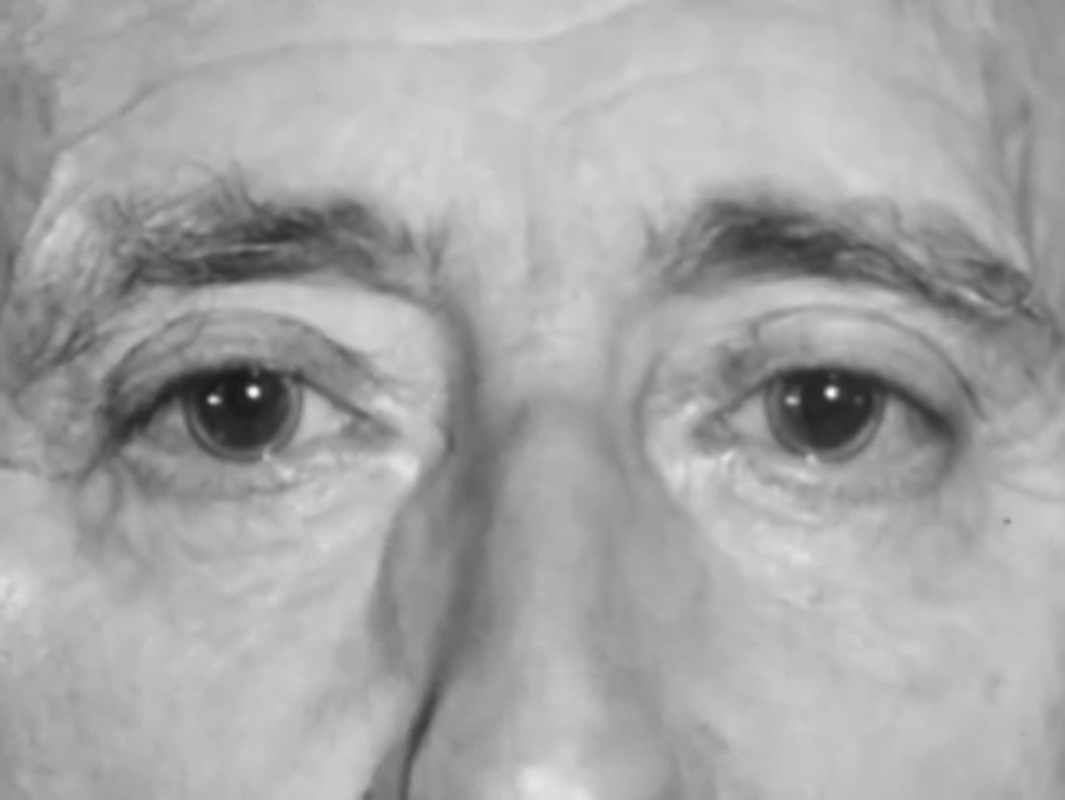Le
Sang d’un Poète
The artist exists
fundamentally as a wish (Nemerov), and here is Cocteau “caught in the trap of
his film”, an imaginary exercise (episode one) until the muse awakens and takes
the poet in hand (episode two), whence Goya fusillades, “the mysteries of
China”, the keyhole eye, Flying Lessons, the hermaphrodite (Danger de MORT)
of consummated composition, pistol at temple, end of images.
Afterward, much
later, of course, an image himself, the artist is the weapon of schoolboy
fights among academicians (episode three), the deadliest of these fells the
admirative, upon whose body (episode four) the connoisseur erects his jeu de
cartes, taking an ace of hearts from the fallen academician to impress a
lady, who waves her golden fan in response. But the schoolboy on the snow has a
guardian angel who wrests with ink the tender flatterer’s trump card,
connoisseurship dies, the lady departs from the table. She is the muse leading
the world as a bull, its horns are the lyre, world and lyre and muse are
contained in the image of the muse’s carven outlined head, and all of this
takes place in a trice, the time of a falling tower. Thus is reached “the
mortal tedium of immortality.”
An aggressive policy
of cinema as poetry is carried out by an administration capable of its demands.
La Belle et la Bête
The supreme
nightmare of a virgin bride is entirely worked out in her mind. La mort c’est
l’amour, the farthest reaches have to be plumbed, only then is the
mysterious threshold crossed that leads to Orphée
and Le testament d’Orphée.
A total work of
art in which every element, script, actors, costumes, makeup, settings, music,
cinematography, and sound, has its visible and audible part to play.
The missed arrow
early on is taken up by the clumsy assassins in Truffaut’s La Mariée était en noir. The arrow that kills Avenant is the spear
that kills Cocteau in Le testament,
where la dame distraite (the
Countess) is one of Beauty’s sisters.
L’Aigle à deux têtes
An exceedingly
fortunate film. The play was filmed much later by Antonioni, in Italian, as Il
Mistero di Oberwald. Cocteau created an entirely new work, subsuming the
play, and filmed it to perfection.
Crowther (New
York Times) freely confessed he had no idea at all what it was about, and
set the tone for John Simon by hoping that Cocteau, then in New York, might
explain it.
After that, the
condescension in Time Out Film Guide is quite laughable.
L’amour et la mort.
Les Parents terribles
Mother loves Son
as he was, her baby, to the detriment of Father, who has taken a young
Mistress, who is now engaged to the Son.
Aunt, the
intellectual, lost Father to Mother (her sister) long ago, but made her peace
and lives in the house.
The plan is to
break up the impending marriage, but a change of heart puts Father and Aunt on
the side of Mistress and Son. Mother kills herself.
From this vantage
point, the drama is much less than English-speaking critics make it out to be,
and considerably more, there’s a joke about this in the script.
The filming has
been noted as a summit of the art, strictly applied to the play in itself.
Orphée
Martyr means
witness, but there is the poet and the innocent bystander, as Nabokov has it.
Godard observes
the terrible secret is revealed in Le
testament d’Orphée, where the Princess and her chauffeur Heurtebise are
condemned to serve as judges in a realm governed by a pagan goddess who does
not suffer poetry.
La villa Santo Sospir
Cocteau’s tour of
the line frescoes with which he decorated the Weisweiller villa at Cap Ferrat.
Much of the
material (Orpheus Dead, Judith and Holofernes, phœnixology) goes
into Le testament d’Orphée.
Shot in
Kodachrome and 16mm expressly as a “film
d’amateur”, narrated by the director.
Le testament d’Orphée ou ne me
demandez pas pourquoi
Carl Sandburg has
his own testament (“Fame If Not Fortune”) around this time.
|
A half-dollar in the hand of a gypsy tells me this and more: You shall go broken on the wheel, lashed to the bars and fates of
steel, a nickel’s worth of nothing, a vaudeville gag, a child’s busted balloon kicked amid dirty bunting and empty
popcorn bags at a summer park. Yet cigarmakers shall name choice Havanas and paste your picture on the box, Racehorses foaming under scarlet and ochre
jockeys shall wear your name, And policemen direct strangers to parks and
schools remembered after you. |
Jean Cocteau s’adresse à l’An 2000

Still at the
villa (“I came for a week, I stayed twelve years”), he faces the camera (long,
medium, close, “wot, no—?”) like Welles (Orson Welles’ Sketch Book) and Hitchcock
(Hitchcock on Grierson) to expound “à l’improviste”
on antigravitation, “apprentice robots”,
“architectural Esperanto”, the poet’s Borgesian mysterium (“je ne suis pas ce moi-là,”
yet “c’est peut-être l’expression la plus haute de l’individu”),
“collective genius”, religion (a Dalian vision, the Ark of the Covenant as “an extraordinary
electric battery”), honors (“des
punitions transcendantes... I belong to the Académie Française, the Belgian Academy, the American
Academy, the German Academy... I have a doctorate honoris causa from Oxford though I hardly speak
English... l’homme remarquable est—doit se rendre
invisible,” as T.S. Eliot would say), errors (“ce sont les fautes
qui sont la véritable
expression de l’individu,” a very Joycean notion), and other matters.
“Aujourd’hui, j’ai
l’air de parler une langue inconnue, et c’est en effet une langue inconnue,
puisque il faut l’apprendre... et je crois qu’il y a quelque chance pour que
cette langue vous arrive, alors que beaucoup de choses qui semblent plus
importants ne vous arrivent pas.”